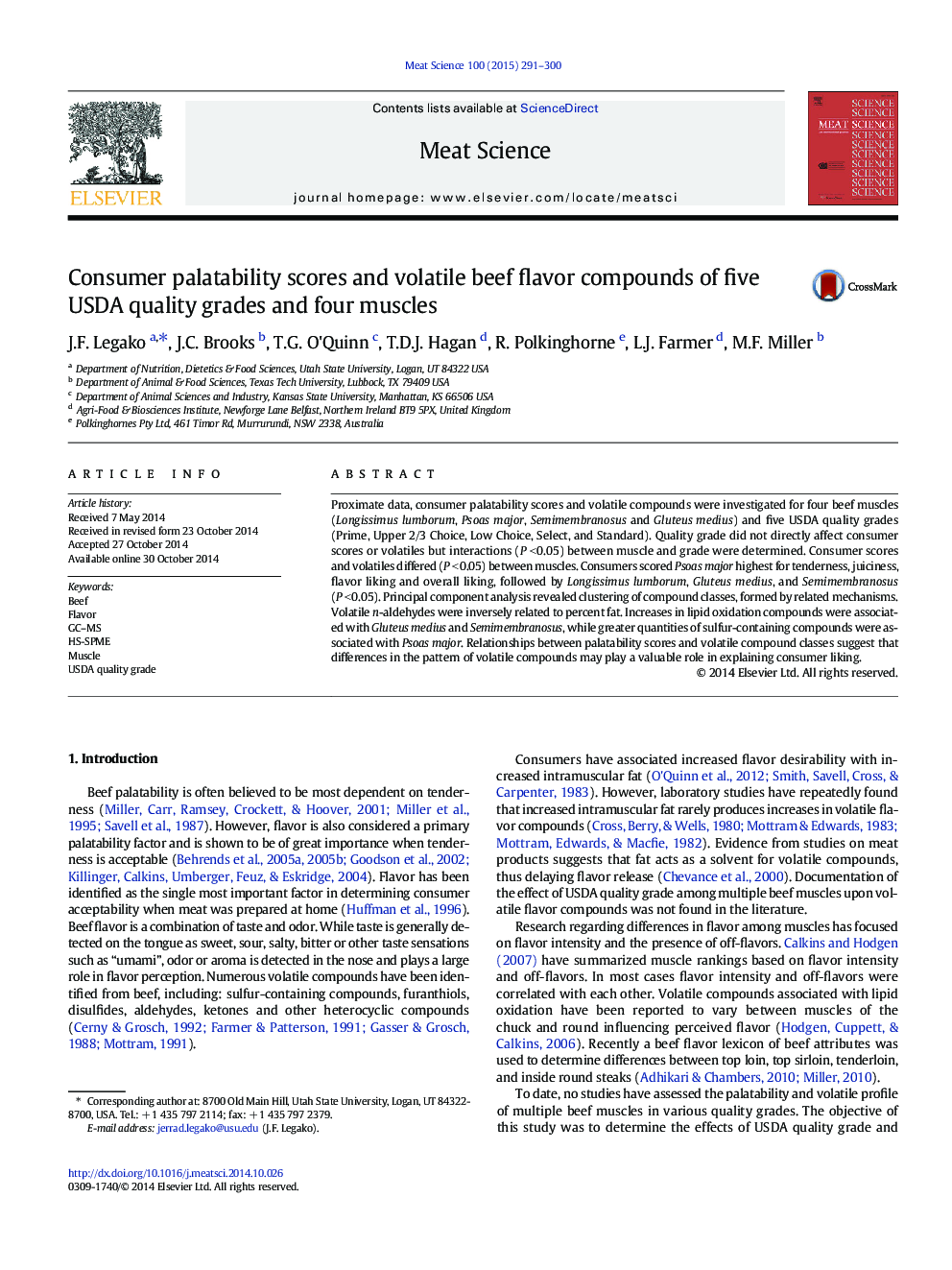| Article ID | Journal | Published Year | Pages | File Type |
|---|---|---|---|---|
| 5791323 | Meat Science | 2015 | 10 Pages |
â¢This first study of USDA beef quality grade and muscle impact on volatile compounds and relationships to palatability.â¢Beef muscle type greatly influenced volatile compounds.â¢Some volatile compounds were negatively correlated with % fat, while others were not related to fat content.â¢Volatile compounds of the same class behaved, similarly, with Maillard products being closely related with flavor liking.
Proximate data, consumer palatability scores and volatile compounds were investigated for four beef muscles (Longissimus lumborum, Psoas major, Semimembranosus and Gluteus medius) and five USDA quality grades (Prime, Upper 2/3 Choice, Low Choice, Select, and Standard). Quality grade did not directly affect consumer scores or volatiles but interactions (P <Â 0.05) between muscle and grade were determined. Consumer scores and volatiles differed (P <Â 0.05) between muscles. Consumers scored Psoas major highest for tenderness, juiciness, flavor liking and overall liking, followed by Longissimus lumborum, Gluteus medius, and Semimembranosus (P <Â 0.05). Principal component analysis revealed clustering of compound classes, formed by related mechanisms. Volatile n-aldehydes were inversely related to percent fat. Increases in lipid oxidation compounds were associated with Gluteus medius and Semimembranosus, while greater quantities of sulfur-containing compounds were associated with Psoas major. Relationships between palatability scores and volatile compound classes suggest that differences in the pattern of volatile compounds may play a valuable role in explaining consumer liking.
